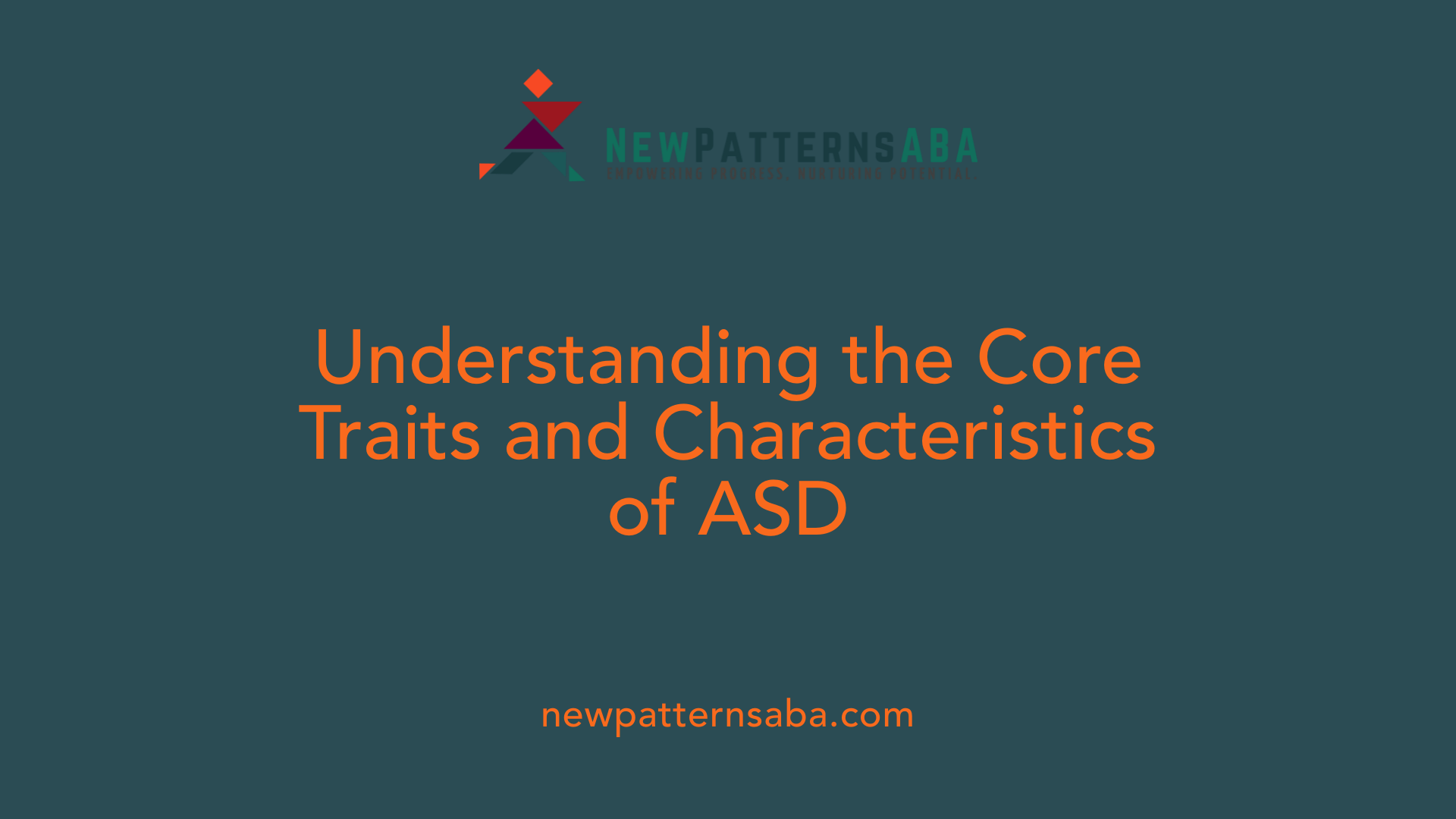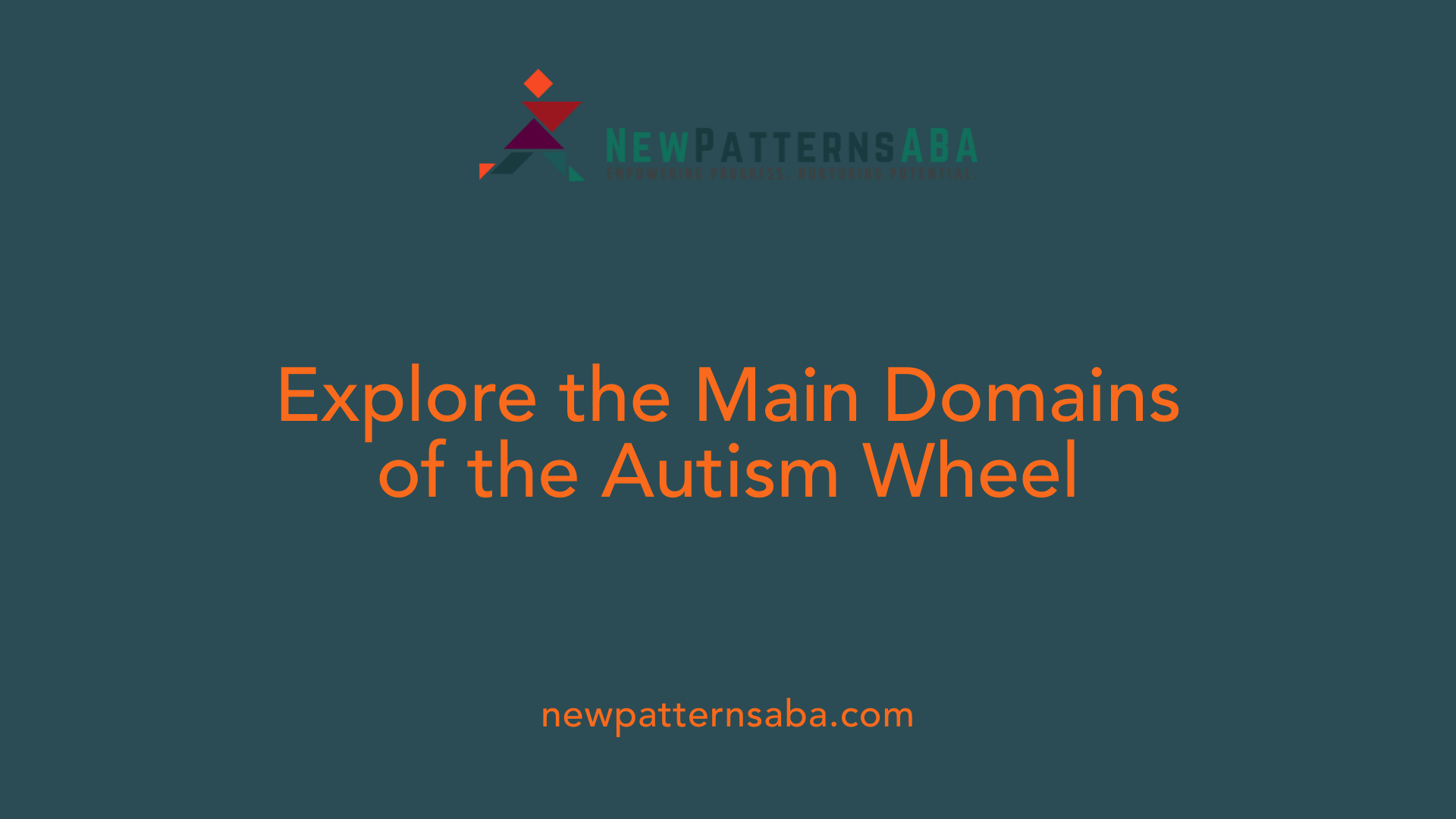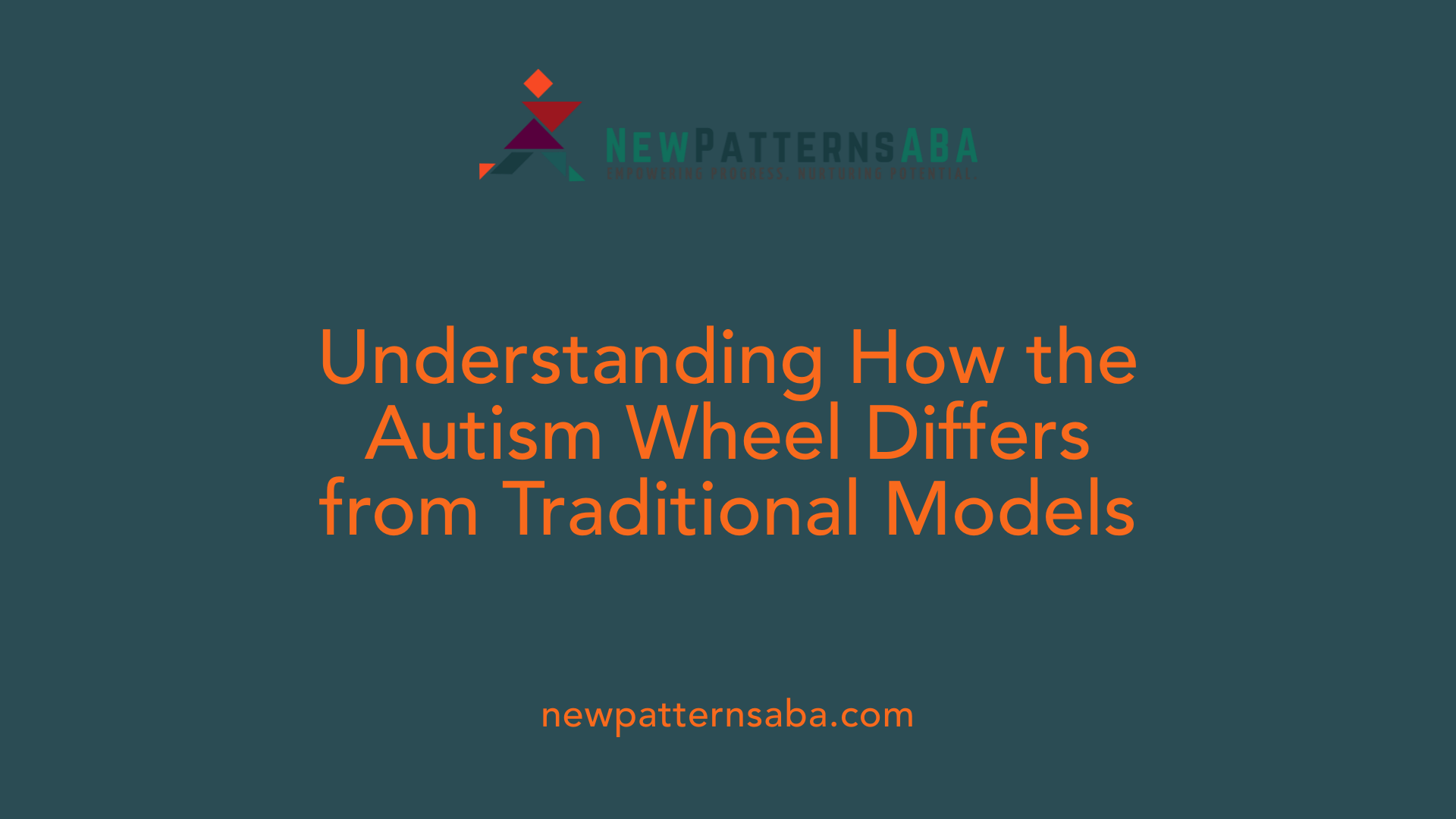Understanding Autism Through a Visual Lens
Introducing the Autism Spectrum and Its Complexity
Autism spectrum disorder (ASD) is a multifaceted neurodevelopmental condition that manifests in a wide range of traits and behaviors. Recognized as a spectrum, ASD encompasses individuals with varying abilities and challenges, emphasizing the importance of personalized understanding and support. The spectrum concept underscores that no two autistic individuals are alike, with differences spanning social skills, communication, sensory sensitivities, and cognitive functions. This diversity often complicates diagnosis and intervention, making tools like the Autism Wheel invaluable for creating tailored, effective support strategies.
The Foundations of Autism Spectrum Disorder

Can you provide a comprehensive overview of autism spectrum disorder and its characteristics?
Autism spectrum disorder (ASD) is a neurodevelopmental condition that presents a wide array of traits and challenges. It primarily affects how individuals communicate, behave, and process sensory information. Symptoms can appear early in life, often by age 2 or 3, though the presentation varies from person to person.
A core feature of ASD is difficulty in social communication and interaction. This can include challenges in making eye contact, responding to one’s name, initiating or maintaining conversations, and understanding nonverbal cues like facial expressions or gestures. Some individuals might use alternative communication methods such as sign language or augmentative and alternative communication (AAC) devices.
Repetitive behaviors and restricted interests are also hallmark characteristics. These behaviors might include hand-flapping, spinning, or lining up objects repeatedly. Many autistic individuals develop intense interests in specific topics or objects, which can be a source of joy or focus.
Sensory sensitivities are common, with individuals being hypersensitive or hyposensitive to stimuli like sounds, textures, smells, or lights. This can manifest as refusing to wear certain clothing, avoiding noisy environments, or seeking out sensory input through specific behaviors.
Autism encompasses a broad spectrum of abilities and severities. Some individuals may require significant support in daily life, while others, like those diagnosed with Asperger’s syndrome in the past, may function independently with minor support.
The range of skills and challenges means that each person with ASD has a unique profile. Some may excel in areas like music or mathematics, while others may struggle with basic daily activities. This diversity emphasizes that autism is not a one-size-fits-all condition.
Regarding causes, research suggests a complex interplay of genetic and environmental factors. No single cause has been pinpointed, but numerous genes and prenatal influences are thought to contribute.
Diagnosis is primarily behavioral, involving developmental screening and assessments by specialists. Tools such as the Autism Diagnostic Observation Schedule (ADOS) and Autism Diagnostic Interview-Revised (ADI-R) are commonly used. Since there's no medical test for ASD, early screening is vital for timely intervention.
Interventions highlight the importance of early support. Approaches like Applied Behavior Analysis (ABA), speech therapy, occupational therapy, and counseling aim to develop skills and reduce challenges. While there is currently no cure, tailored strategies can greatly enhance quality of life and foster independence.
Understanding ASD as a spectrum promotes a nuanced view that recognizes individual differences rather than fitting everyone into rigid categories. It helps families, educators, and therapists develop personalized support plans.
In sum, autism spectrum disorder is a complex, lifelong condition with a diverse range of characteristics. Recognizing its varied presentation is essential to providing compassionate, effective support tailored to each individual’s strengths and needs.
The Autism Wheel: A Visual and Conceptual Framework

What is the Autism Wheel and why is it important?
The Autism Wheel is a comprehensive visual and conceptual tool that captures the diversity of traits and characteristics found among individuals with autism spectrum disorder (ASD). It presents autism not as a single, uniform condition but as a spectrum—meaning each individual exhibits a unique blend of social, behavioral, sensory, and cognitive features.
At its core, the wheel portrays different domains such as sensory sensitivities, communication styles, behavioral patterns, emotional regulation, and cognitive abilities. All these aspects radiate outward from a central point, illustrating that no two autism profiles are the same. This visualization underscores the importance of personalized support, tailored interventions, and understanding that strengths and challenges vary widely across individuals.
Using the Autism Wheel promotes multiple objectives: it challenges stereotypes by emphasizing diversity, encourages acceptance of neurodiversity, and enhances collaboration among families, educators, therapists, and individuals themselves. It helps in developing targeted educational plans and therapies that are specific to each person’s needs, fostering a more inclusive environment.
Historical background and development
The concept of the Autism Wheel stems from ongoing efforts to better understand the complex nature of autism. Historically, autism was often viewed through a narrow lens, focusing on deficits and using simple labels like "high functioning" or "low functioning." These labels oversimplified the spectrum and failed to capture individual differences.
In response, researchers and clinicians sought more nuanced ways to depict autism’s diversity. They developed the idea of a visual, flexible model that could accommodate the many traits present in autistic individuals. The Autism Wheel was created as an evolution of earlier models, providing a holistic view that moves beyond linear or tiered representations.
This development aligns with contemporary approaches emphasizing neurodiversity, emphasizing strengths, and encouraging early detection and intervention tailored to individual profiles. The wheel is now widely adopted in educational, clinical, and family settings, reflecting a shift toward personalized understanding and support.
Visual representation and structure
The Autism Wheel typically appears as a circular diagram, divided into various sections or slices. Each section corresponds to a specific domain relevant to autism:
| Domain | Description | Examples or Traits |
|---|---|---|
| Core Characteristics | Social communication, repetitive behaviors | Eye contact challenges, routines, interests |
| Sensory Profiles | Responses to sensory stimuli | Hypersensitivity to sounds, textures, smells |
| Executive Functioning | Planning, organization, flexibility | Difficulties with transitions, rigid thinking |
| Emotional Regulation | Managing emotions | Anxiety, meltdowns, self-calming behaviors |
| Co-occurring Conditions | Additional challenges like ADHD or anxiety | Attention deficits, heightened anxiety |
Each section can be customized with particular traits relevant to the individual. The wheel’s circular shape emphasizes that these traits are interconnected and fluid, not isolated or linear.
This structure facilitates understanding by providing a straightforward yet flexible way to conceptualize the multifaceted nature of autism. Practitioners and families can use the wheel to identify strengths, challenges, and priority areas for support, making it a practical tool for goal setting and progress tracking.
In summary, the Autism Wheel serves as a dynamic model that visualizes the rich diversity within ASD. Its structure encourages continuous learning, cultural sensitivity, and individualized care—ultimately fostering a more inclusive understanding of what it means to be autistic.
Core Components and Domains of the Autism Wheel

What are the main components of the Autism Wheel?
The Autism Wheel, introduced by Dr. Luke Beardon in 2020, is a powerful visual tool that captures the wide-ranging traits and characteristics of individuals with autism spectrum disorder (ASD). It features a circular diagram divided into multiple sections, each representing a different aspect of autism. These core domains include social communication challenges, sensory processing differences, restrictive and repetitive behaviors, cognitive and learning skills, and physical or medical needs.
Each section of the wheel helps to illustrate how these traits can vary from person to person, emphasizing that autism is not one-size-fits-all. For example, one individual may experience significant sensory sensitivities, while another might have profound challenges in social interaction but less sensory sensitivity. The wheel's design promotes an understanding of the interconnectedness of these domains, showing that difficulties in one area may influence or be related to traits in others.
Moreover, the Autism Wheel serves as a diagnostic and support planning guide, facilitating the creation of personalized strategies. It allows professionals, parents, and caregivers to see the full picture of an individual's profile and tailor support accordingly. This comprehensive approach ensures that interventions are more effective and targeted, considering the person's unique strengths and challenges.
Interconnection between domains
The various sections of the Autism Wheel are not isolated; they are interconnected in many ways. For instance, sensory sensitivities can influence social interactions—overwhelming sensory input might make social situations stressful or difficult to navigate.
Similarly, restricted and repetitive behaviors often serve as coping mechanisms for managing sensory overload or emotional dysregulation. Cognitive skills and executive functioning—such as planning, flexible thinking, and self-monitoring—are also intertwined with communication abilities and behavior patterns.
Understanding these connections is crucial for developing comprehensive support plans. For example, addressing sensory sensitivities with occupational therapy can improve a person's ability to participate in social activities or manage routines better.
Personalization of profiles
One of the key strengths of the Autism Wheel is its adaptability. It is designed to reflect each individual’s unique profile by adjusting the prominence and specific traits within each domain. This personalization makes it an invaluable tool for creating tailored interventions.
In educational settings, the wheel helps educators develop Individualized Education Plans (IEPs) that address specific needs, while therapists use it to focus on targeted areas like sensory integration or social skills.
Families and caregivers benefit from this personalized view by better understanding the specific challenges and strengths of their loved ones, fostering empathy and support. Because autism traits can evolve over time, the Autism Wheel is also used to track progress and adjust strategies as needed.
Overall, this flexible, visual model promotes a nuanced understanding of autism, emphasizing that every individual’s experience is distinct. It encourages ongoing learning, cultural sensitivity, and the importance of personalized support in fostering meaningful development and quality of life.
Utilizing the Autism Wheel in Support and Intervention

How is the Autism Wheel used to support individuals with autism?
The Autism Spectrum Wheel serves as a practical and visual framework to better understand the unique profile of each person with autism. It organizes various traits and challenges into categories such as social communication, sensory sensitivities, repetitive behaviors, emotional regulation, and cognitive skills. This comprehensive view allows caregivers, educators, and therapists to develop highly tailored support strategies.
The wheel’s primary purpose is to foster personalized interventions. For example, if a child experiences sensory hypersensitivities, supports may include creating quiet spaces or using noise-canceling devices. If social communication difficulties are prominent, visual supports or social stories might be employed. The wheel emphasizes strengths as well as challenges, guiding strategies that leverage individual talents like musical ability or intense interests.
In addition to planning, the Autism Wheel acts as a collaborative tool. It helps professionals and families work together to design and implement effective, flexible support plans. By considering all aspects of an individual’s profile, teams can ensure interventions are not one-size-fits-all but are continuously refined.
Application in educational, therapeutic, and family contexts
In educational settings, teachers use the wheel to craft individualized education plans (IEPs) that address specific learning needs. It supports classroom accommodations and targeted teaching methods based on sensory profiles or executive functioning challenges. In therapy, practitioners utilize the wheel to set goals, select appropriate modalities such as speech therapy or occupational therapy, and monitor progress.
Families also rely on the wheel to understand their loved ones better. It aids in recognizing early traits and adapting daily routines to support comfort and development. The visual nature of the wheel makes complex traits easier to comprehend and discuss.
Collaborative planning and individualized strategies
The Autism Wheel encourages teamwork among caregivers, educators, therapists, and individuals with autism. It provides a shared understanding of the person’s profile, fostering consistent support strategies across environments.
Team members can prioritize target areas such as communication or emotional regulation, and create specific interventions. For instance:
| Domain | Intervention Examples | Goals |
|---|---|---|
| Sensory sensitivities | Use of sensory diets, calming tools | Reduce sensory overload and distress |
| Communication | Visual schedules, AAC devices | Improve expression and comprehension |
| Repetitive behaviors | Alternative activities, setting boundaries | Support self-regulation and engagement |
| Emotional regulation | Emotion charts, calm-down strategies | Enhance emotional awareness and management |
These strategies are adaptable as the individual grows or their needs change, highlighting the importance of ongoing assessment using the wheel.
Monitoring progress and adapting supports
Regularly revisiting the Autism Wheel is essential for tracking development and adapting interventions. Changes in behaviors, skills, or sensory responses can be identified early, allowing for timely updates to support plans.
This ongoing process ensures supports remain relevant and effective, promoting continuous growth and well-being. Using the wheel as a dynamic tool, teams can celebrate progress and identify areas needing more focused attention.
The holistic approach promoted by the Autism Wheel helps break down barriers, foster understanding, and cultivate environments where autistic individuals can thrive. Its flexible, individualized framework supports a spectrum of needs across life stages and settings, making it an indispensable part of modern autism support strategies.
Comparison with Other Autism Models

How does the Autism Wheel compare to other models of understanding autism spectrum disorder?
The Autism Wheel presents a unique, comprehensive approach to understanding ASD by combining visual representation with a broad perspective on individual variation. Traditional models of autism often rely on diagnostic criteria outlined in manuals like the DSM-5, which focus on specific deficits in areas such as social communication and repetitive behaviors. These models tend to categorize traits and assign labels like 'high functioning' or 'low functioning' based on observed behaviors, often leading to simplified classifications.
In contrast, the Autism Wheel emphasizes a holistic view that considers multiple interconnected domains. It visually organizes traits such as sensory sensitivities, cognitive flexibility, emotional regulation, and co-occurring conditions all within a circular model. This organization highlights the fact that each autistic individual has a unique profile, with strengths and challenges across various areas.
One of the main differences lies in the approach's flexibility. Unlike traditional models that may prioritize deficits or specific symptom clusters, the Autism Wheel promotes understanding autism as a spectrum of traits that can vary widely from person to person. This enables practitioners, families, and individuals to see autism as a dynamic and nuanced condition rather than a fixed set of symptoms.
The visual aspect of the Autism Wheel also facilitates better communication and collaboration. It allows people to see the multifaceted nature of autism at a glance, fostering a more empathetic and person-centered perspective. It helps in creating individualized support plans, guiding interventions, and understanding how different traits interact within a person.
Moreover, the Autism Wheel supports early recognition of traits across multiple domains, which can lead to earlier and more tailored interventions. It also encourages continuous learning and adaptation as traits and needs evolve over time.
In summary, while traditional autism models focus on categorical diagnoses and specific traits, the Autism Wheel offers a flexible, holistic, and visual framework that better captures the diversity and complexity of ASD. This approach aligns with modern practices emphasizing personalized support, strengths-based assessments, and understanding each person's unique experience.
Benefits and Practical Applications of the Autism Wheel

How does the Autism Wheel promote enhanced understanding and empathy?
The Autism Wheel serves as a powerful visual tool that highlights the diverse range of traits and experiences within autism spectrum disorder (ASD). By representing individual profiles across multiple domains such as communication, sensory processing, behaviors, and emotional regulation, the wheel encourages viewers to see autism as a broad and varied spectrum rather than a single, uniform condition.
This approach fosters a more nuanced understanding, helping educators, clinicians, and families appreciate the unique ways each autistic person perceives and interacts with the world. It reduces misconceptions and stigma by emphasizing that differences are part of individual profiles, not deficits. Recognizing this diversity nurtures empathy, making support more compassionate and tailored.
How does the Autism Wheel assist in personalized intervention planning?
One of the primary advantages of the Autism Wheel is its capacity to inform customized support strategies. Each section of the wheel maps different skill levels, sensitivities, and behaviors, offering a detailed picture of an individual’s strengths and challenges.
Early identification of traits across domains such as sensory sensitivities or executive functioning difficulties allows clinicians and educators to craft targeted interventions. For example, if a child shows hypersensitivity to auditory stimuli, sensory integration strategies can be prioritized. The wheel guides the development of personalized education plans, therapeutic approaches like ABA or occupational therapy, and social skills programs.
Furthermore, it supports ongoing monitoring and adjustment of interventions by providing a clear visual overview of progress or emerging needs over time.
How does the Autism Wheel support families and professionals?
The Autism Wheel acts as a valuable communication bridge among families, educators, therapists, and healthcare providers. It helps all stakeholders develop a shared understanding of the individual’s profile, fostering collaboration and coordinated efforts.
Families can utilize the wheel to better comprehend their child's behaviors and needs, empowering them to advocate effectively. Professionals can use the visual to design cohesive support plans that consider multiple facets of autism, ensuring that interventions are comprehensive and sensitive to the person’s unique profile.
Additionally, the wheel supports early screening and diagnosis by providing a framework for recognizing varied traits and facilitating earlier, more tailored support. It can be adapted for use in individual therapy, school planning, or family meetings, making it a versatile tool.
Practical uses in different settings
| Setting | Application | Benefits | Additional Notes |
|---|---|---|---|
| Clinical | Developing treatment plans, monitoring progress, adjusting supports | Targeted interventions, effective support adjustment | Supports multidisciplinary teamwork |
| Educational | Creating individualized education plans (IEPs), guiding support | Enhanced collaboration, better learning outcomes | Tailors strategies to student’s profile |
| Family and Caregiving | Understanding behavioral patterns, advocacy, support planning | Empowerment, improved communication and support | Helps in decision-making and resource allocation |
Moving Beyond Labels
The visual and conceptual flexibility of the Autism Wheel encourages moving away from simplistic labels like 'high functioning' or 'low functioning'. Instead, it promotes viewing autism as a collection of traits that vary in degree and expression.
This perspective supports a more compassionate, informed approach that recognizes individual growth and change over time. It emphasizes strengths and areas for support, helping all involved develop more realistic expectations and goals.
Overall Impact
The Autism Wheel enhances understanding and acceptance of autism by illustrating its multifaceted nature. Its practical applications streamline support efforts, foster communication, and promote a respect for individual differences. As part of a comprehensive, person-centered approach, the wheel proves vital for creating supportive environments where autistic individuals can thrive.
Conclusion: Embracing a Person-Centered Perspective on Autism

What is the significance of the Autism Wheel?
The Autism Spectrum Wheel is a vital tool for understanding the complex nature of autism. It visualizes diverse traits and characteristics, highlighting that autism cannot be summarized by simple labels like 'high functioning' or 'low functioning.' Instead, it offers a detailed overview of each individual’s unique profile across various domains such as communication, sensory processing, behaviors, and cognitive abilities.
This visual model promotes a more accurate and respectful perception of autism, fostering an environment of acceptance. It emphasizes that everyone on the spectrum has strengths to celebrate and challenges to support, encouraging a balanced view that avoids stereotypes and oversimplifications.
Why is an individualized understanding important?
Every person with autism has a different combination of traits, needs, and preferences. The Autism Wheel helps tailor support and interventions to each individual's profile.
By using this personalized approach, educators, therapists, and families can develop targeted strategies that boost strengths, address specific challenges, and improve quality of life. Early recognition of traits across the domains in the wheel can lead to more effective and timely support, making a significant difference in developmental outcomes.
This approach fosters respect for neurodiversity, recognizing that each person’s way of experiencing and interacting with the world is valid and valuable. It encourages ongoing learning as traits and needs can change over time, necessitating flexible and adaptive support systems.
How can continuous learning and acceptance be encouraged?
Understanding the complexities of autism involves a commitment to continuous education. Staying informed about the latest research, assessment tools, and intervention strategies ensures support remains relevant and effective.
Acceptance grows when we see autism through a person-centered lens, recognizing individual differences rather than trying to fit everyone into preconceived categories. This fosters empathy and can lead to more inclusive communities that value diversity.
Promoting dialogue with autistic individuals and their families also enhances understanding. Listening to their experiences affirms their identity and promotes self-advocacy.
The Autism Spectrum Wheel is more than just a diagram; it’s a tool that encourages ongoing appreciation for the rich diversity within the spectrum. Embracing a person-centered perspective helps us support each individual holistically, respecting their unique journey and promoting a culture of lifelong learning and acceptance.
Fostering a Deeper Understanding and Support System
The Autism Wheel is more than just a visual aid; it is a vital tool that fosters a deeper understanding of the diverse experiences of individuals on the autism spectrum. By highlighting the interconnected and unique profiles of each person, it advocates for a more compassionate, personalized approach to support, education, and therapy. Embracing this model encourages ongoing learning, respect for neurodiversity, and the continuous adaptation of strategies to meet individual needs. As awareness grows, the Autism Wheel can help build more inclusive and supportive communities, empowering autistic individuals to thrive in their environments and encouraging greater acceptance and understanding across society.
References
- Understanding the Spectrum | Frist Center for Autism and Innovation
- Understanding the Autistic Spectrum Wheel | All Star ABA
- A Comprehensive Guide to Autism Spectrum Wheel - Move Up ABA
- Understanding the Autism Spectrum Wheel - Rori Care
- Autism Spectrum Wheel: Insights into its Purpose and Interpretation
- From Autistic Linear Spectrum to Pie Chart Spectrum
- What Does Autism Look Like? - National Autism Center at May Institute






